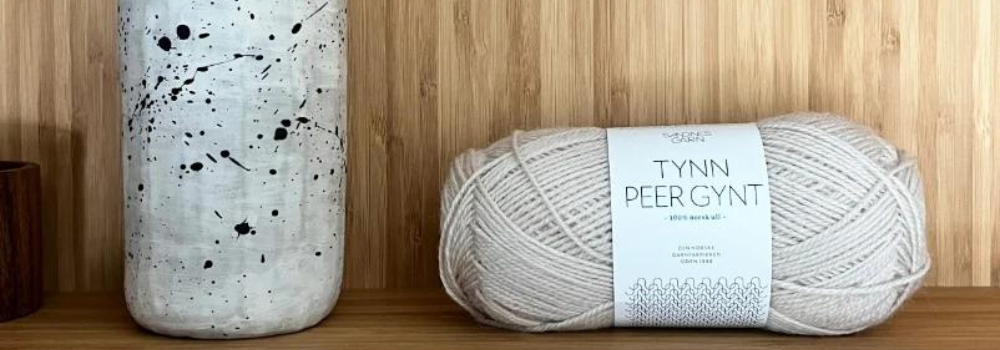
Tynn Peer Gynt vs SUNDAY
Share
A comparison of one of Sandnes Garns' staple yarns, Sunday and one of their newest offerings, Tynn Peer Gynt.
The similarities:
They are both fingering weight yarns, with Tynn Peer Gynt offering 205m per 50g, while Sunday has 235m, making them great for a huge variety of projects, and due to being a thinner yarn they are light-weight and quite trans-seasonal.
They're both from the powerhouse Sandnes Garn, so the quality is guaranteed, and they continually create new patterns so you'll never run out of ideas on how to use these yarns.
The differences:
While both fingering weight, their gauge is a little different with Sunday coming in at 28 stitches per 10cm on 3mm needles, while Tynn Peer Gynt works up to 27 stitches per 10cm on 3mm needles. This tells us that Sunday is slightly thinner since it manages to squeeze an extra stitch in every 10cm.
The other big difference is the yarn type. Tynn Peer Gynt is 100% Norwegian Wool, while Sunday is 100% Merino, so Sunday is softer and has a little more elasticity. It also has a slightly smoother finish.
Sunday has been around for a while, and as well as it's main range, it also has a PetiteKnit sub-line, there are currently 62 shades of Sunday, while there are only 25 of Tynn Peer Gynt (which actually isn't that bad!), so if you're looking for a specific shade you may find Sunday has a closer match, but the colour line in Tynn Peer Gynt is quite broad, and I'd expect to see it expand with time. One area where Tynn Peer Gynt is lacking at the moment is in it's options in the brown colour family.
Pricing is the other area of consideration Tynn Peer Gynt retails at $11 per ball while Sunday is more expensive at $15.
Can I sub Tynn Peer Gynt for Sunday in a pattern?
Of course this depends on the pattern. If the pattern calls for Sunday being held with another strand of yarn (like silk mohair, or even a dk weight yarn) then they are similar enough that a straight switch shouldn't cause any problems - just make sure you swatch first.
If Sunday is being held on it's own I'd proceed with a little more caution due to the change in gauge. If you can't get gauge by changing needle size, then bear in mind that Tynn Peer Gynt is likely to work up a little larger than what Sunday would, so if you're working on an oversized garment, and you're not too worried if it's a little larger than the pattern recommends, then a swap should be OK, but on a closer fitted garment it might end up losing some of it's fit, so you'd be better to stick with Sunday or if you're confident making changes to a pattern, do some maths and remove a few stitches from the pattern.
An example of the size change: If the pattern calls for Sunday on 3mm needles and you end up with a 120cm chest circumference, and you knit the same pattern with the same needles in Tynn Peer Gynt the circumference will grow to 124cm.
When to use which one?
Tynn Peer Gynt is soft, but it's not as soft as Sunday so I'd choose Sunday if I was working on a garment for a baby, or for a beanie to aviod a scratchy forehead!
For jumpers and cardigans for children and adults, I'd happily use Tynn Peer Gynt, especially if I wanted a more budget-friendly alternative or a more rustic look.
If I wanted to make something in a beautiful brown I'd go for Sunday, Chocolate Truffle, Brunt Sukker and Eikenott are such lovely shades, and as yet haven't been reproduced on Tynn Peer Gynt.
Tynn Peer Gynt also works up to the same gauge as Tynn Line, and while we often think of wool as being for snuggling up in, it's also a great material in terms of breathability and being anti-bacterial, so I'm thinking a summery tee or even a dress knit up in Tynn Peer Gynt may be in my future.
